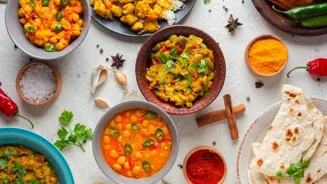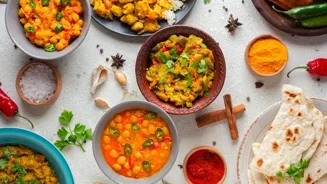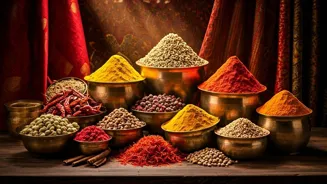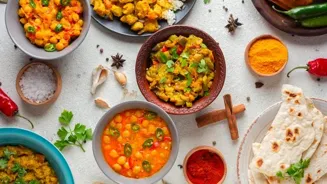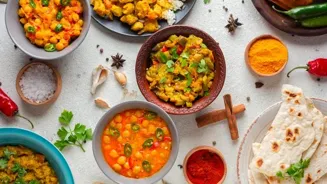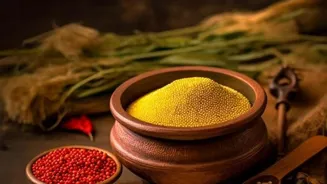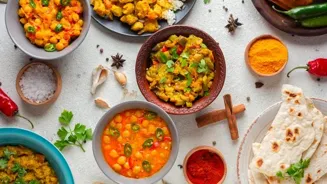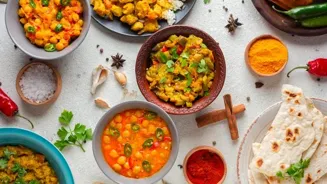Discover the dynamic evolution of Indian cuisine, blending tradition with modernity. Read more to explore the culinary renaissance
Indian cuisine, a tapestry woven with threads of history, geography, and
culture, is undergoing a fascinating transformation.
While deeply rooted in ancient traditions and time-honored recipes, it's also embracing modern techniques and influences, creating a delightful fusion that tantalizes the taste buds of both young and old.
This evolution isn't about abandoning the past; it's about building upon it, enhancing it, and making it relevant for a new generation of food enthusiasts.
From the humble street food vendor to the Michelin-starred chef, everyone is contributing to this culinary renaissance, proving that Indian cuisine is not just a set of recipes but a living, breathing art form.
This journey is a testament to the adaptability and ingenuity of Indian culinary experts, who are skillfully blending the old with the new. The aromas of spices and the vibrant colors of dishes remain, but the presentation and the experience are being reimagined for a contemporary world.
Diverse regional variations shape Indian cuisine's rich complexity
The cornerstone of Indian cooking lies in its diverse regional variations. Each state boasts a unique culinary identity shaped by its climate, local produce, and cultural heritage. The simple, yet flavorful dishes of South India like idli and sambar have found home in the northern states.
The use of spices continues to be a central aspect of Indian food creating a symphony of flavors. For instance, the robust flavors of North Indian curries, enriched with cream and butter, stand in stark contrast to the tangy and subtly spiced dishes of the East.
These regional differences are not just about ingredients; they reflect the diverse social customs and agricultural practices of the various regions. Understanding these nuances is crucial to appreciating the richness and complexity of Indian cuisine.
However, the evolution isn't erasing these distinctions; instead, it's highlighting them, showcasing the incredible range and adaptability of Indian flavors.
Chefs are experimenting with regional ingredients and techniques, cross-pollinating culinary ideas, and creating innovative dishes that pay homage to their heritage.
Modern Indian cuisine blends tradition with innovation, pushing boundaries to enhance flavors
Modern Indian cuisine is characterized by a willingness to experiment with global ingredients and culinary techniques. Fusion dishes, which were once considered taboo by traditionalists, are now gaining popularity as chefs seek to push the boundaries of Indian flavors.
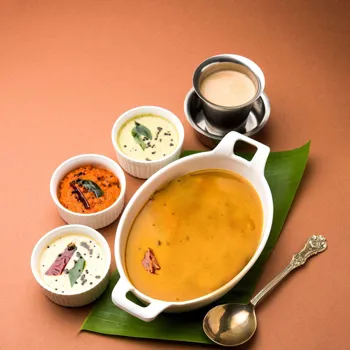
The use of sous vide cooking, molecular gastronomy, and other modern techniques is becoming increasingly common, allowing chefs to achieve textures and flavors that were previously impossible.
This isn't about Westernizing Indian food; it's about enhancing it, making it more sophisticated, and presenting it in a way that appeals to a broader audience.
For example, a traditional lentil soup might be reimagined as a smooth, velvety puree, served with a crispy lentil wafer and a drizzle of truffle oil. These experiments often invite discussions and healthy debate on the relevance of traditions.
The goal is always to celebrate the essence of Indian flavors while embracing a modern sensibility.
Rise of health consciousness shaping modern Indian cuisine
The rise of health consciousness has also played a significant role in the evolution of Indian cuisine. As people become more aware of the nutritional value of their food, chefs are responding by creating healthier versions of traditional dishes.
The use of whole grains, lean proteins, and fresh vegetables is becoming more prevalent, and there's a growing emphasis on reducing the amount of oil and sugar used in cooking. This is not about compromising on flavor but about finding creative ways to make dishes both delicious and nutritious.
Steaming, grilling, and baking are replacing frying as preferred cooking methods, and natural sweeteners like honey and jaggery are being used instead of refined sugar. Many are exploring ancient grains like millets and incorporating them into everyday Indian dishes.
This focus on healthy eating is ensuring that Indian cuisine remains relevant and appealing to a health-conscious generation.
Indian diaspora influences global cuisine with fusion creations
The influence of the Indian diaspora is also shaping the evolution of Indian cuisine. As Indians have migrated to different parts of the world, they have taken their culinary traditions with them, adapting them to local ingredients and tastes.
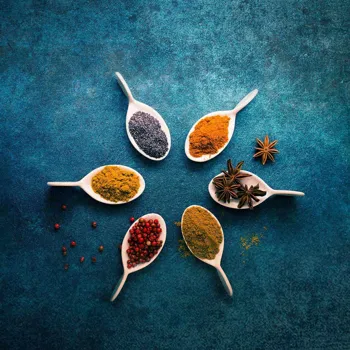
This has led to the creation of new and exciting fusion cuisines that blend Indian flavors with global influences.
Dishes like "butter chicken pizza" and "samosa chaat tacos" may sound unconventional, but they represent a creative attempt to bridge cultures and introduce Indian flavors to a wider audience.
This cross-cultural exchange is not just about creating new dishes; it's also about raising awareness of Indian cuisine and its rich cultural heritage.
Indian restaurants around the world are becoming increasingly sophisticated, offering innovative menus and showcasing the diversity of Indian flavors.
Media and influencers shape the evolving landscape of Indian cuisine
The media, especially online platforms and cooking shows, plays a huge role in spreading awareness about Indian food. With influencers displaying different dishes can open a dialogue about the evolution of Indian food. Home cooks are also experimenting and posting their creativity online.
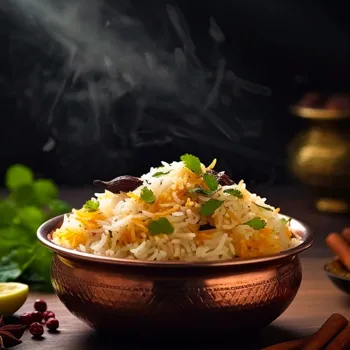
Whether the change is as subtle as using a substitute for a scarce ingredient, or as grand as fusion dishes are constantly changing how food is perceived. This democratisation of information is creating an eco system of growth and experimentation.
And is helping people explore new recipes and ingredients. Ultimately, the evolution of Indian cuisine is a celebration of tradition and modernity. It's a story of how a cuisine that is deeply rooted in history is adapting to the changing tastes and preferences of a new generation.
By embracing modern techniques, health consciousness, and global influences, Indian cuisine is ensuring that it remains relevant and delicious for generations to come.
AI Generated Content. Glance/InMobi shall have no liability for the content